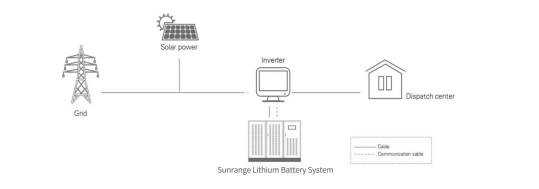| Performance Parameter |
| Model No | SRR-100-8S | SRR-200-8S |
| Nominal Voltage(VDC) | 25.6 | 25.6 |
| Nominal Capacity(AH) | 100 | 200 |
| Nominal Capacity (WH) | 2560 | 5120 |
| Usable Capacity (WH) | 2304 | 4608 |
| Discharge Voltage(V) | 23 | 23 |
| Charge Voltage (V) | 28 | 28 |
| Recommend Charge/ Discharge Current (A) | 50 | 50 |
| Max.Charge/ Discharge Current(A) | 100(3S) | 200(3S) |
| Communication | RS485/CAN/BIuetooth(Optional) | RS485/CAN/BIuetooth(Optional) |
| Working Temperature | 0-40℃ | 0-40℃ |
| Storage Temperature | -20-70℃ | -20-70℃ |
| Humidity | 10%-80% | 10%-80% |
| Certification | CE/IEC/UN38.3/MSDS | CE/IEC/UN38.3/MSDS |
| Design Life | 10 Years+ | 10 Years+ |
| Cycle Life | ≥6000@90%D0D(25±5℃) | ≥6000@90%D0D(25±5℃) |
| Electrical Design Redundancy | >20% | >20% |
| Dimension | 482*215*178MM | 482*463*178MM |
| Weight | 28.2KG | 47.9KG |
Advantage comparing with Lead Acid Battery?
1. Energy Density
Lithium-Ion: Higher energy density, meaning they store more energy for the same weight and size.
Lead-Acid: Lower energy density, making them bulkier and heavier for the same energy storage capacity.
2. Cycle Life
Lithium-Ion: Much longer cycle life,10+ years designed lifespan, up to 6000 cycles.
3. Efficiency
Lithium-Ion: High round-trip efficiency of 90–95%, meaning less energy is lost during charging and discharging.
Lead-Acid: Lower efficiency, around 70–80%, with more energy lost as heat.
4. Depth of Discharge (DOD)
Lithium-Ion: Can be discharged up to 80–90% of their capacity without significantly reducing lifespan.
Lead-Acid: Typically recommended to discharge only 50% of their capacity to maintain longevity.
Compatible Inverters List

Resident Energy storage system
